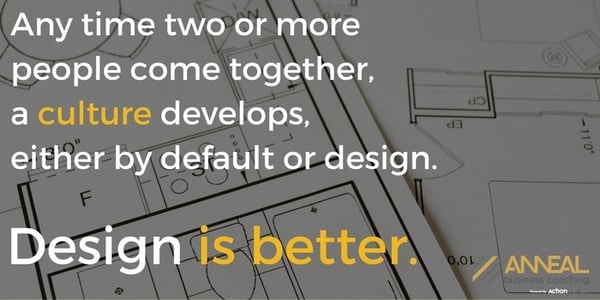“Martin, I’m going to do it today.”
“Do what?”
“Let him go.”
“I thought you were going to talk to me about it.”
“I AM talking to you about it.”
This was a conversation with a business coaching client from several years ago. The owner was talking about firing his sales manager. His mind was made up, and despite our short conversation, he terminated him that afternoon.
When I began coaching the company, the owner and sales manager had been together for about three years. The sales manager had been instrumental in growing revenues from near zero to millions in that time. There was no theft, no discipline problem, and no insubordination involved.
But there was definitely a culture conflict.
"The result was a culture conflict that resulted in a termination which slowed sales for a considerable time."
The sales manager was ex-military, gregarious, told a lot of jokes, and flew jets on weekends. He worked on his own schedule as he moved prospects through the sales funnel, and he was good at it.
The owner and the rest of the team were noticeably reserved. The team was very young, spent structured days facing computer screens doing defined tasks, and knew little or nothing about the art of selling. The result was a culture conflict that resulted in a termination which slowed sales for a considerable time.
Any time two or more people come together, a culture develops, either by default or design. Design is better.

There is a saying in business that we “Hire for skill and fire for behavior.” I believe that’s true and the reason is that we know how to look for specific skills, but not for undefined behaviors.
Instead, we rely on gut feel or recommendations from former employers who are scared to say anything for fear of lawsuits. Few of us have given thought to designing a culture, looking for compatible hires, and to letting them know “How to get along around here.”
Designing our culture begins with clarifying our values in a written culture statement. Think of a culture statement as an expression of the attributes of a perfect employee who is completely aligned with our values. It has to start with us because if we aren’t clear in our own minds, our teams cannot possibly be clear in theirs.
Creating a culture statement is a three-step process:

We begin by listing, in writing, the values most important to us. Think about author Brian Tracy’s, definition of values: “Those things we believe to be right, good and worthwhile.”
For example:
For an extended list of values, visit Brian Tracy’s site: http://bit.ly/2rGZMTZ
The next step is to expand on the values we’ve chosen to refine the meaning. Think of employees who do things right, who just seem to “get it.” What do they do that can be used as examples of behavioral standards? We can use their behaviors to illustrate our values and make our intentions clear.
For example:
Great culture statements will contain the five to ten values most important to us.
Once our culture statements are written, the next step is to refine them and instill them in our organizations by using them for:
To clarify the behavioral traits we value which enables us to look for them when hiring. To see how, read my article “How to Hire the Right People.”
As tools for employee development workshops. A useful exercise is to discuss one value in a team meeting. Have employees discuss what it means to them and to have them give examples. They will self-define the meaning and we will have the chance to refine our statement and to clear up any misinterpretations.
As a means to evaluate employees on otherwise subjective criteria.
The words “Integrity, Communication, Respect and Excellence” were visible on the lobby walls at Enron as police led company officers out of the building in handcuffs. The words did not represent the true values of the company - or at least of top management.
"Our culture statements must reflect what we actually believe, and the proof will be our behavior."
Our culture statements must reflect what we actually believe, and the proof will be our behavior. Platitudes are at best are ignored and at worst lead to cynicism as people observe the difference between what we say and how we act.
We have to get it right.
Until we do, we are better off without a culture statement
Brian Tracy also said about values that they “...are non-negotiable. They define the things we stand for, and more importantly, the things we won’t stand for.”
We are our values.
Extensive research by the Gallup Organization, as reported by Buckingham and Coffman in their book “First Break all the Rules,” has shown people do not change their values easily.
The problems at Enron had deep-seated roots in the values of the company leadership. We cannot expect people who have totally self-serving values to change, and they didn’t. The problems of my client and his sales manager did not rise to that level.
I like both the owner and the sales manager. They are both great people whom I know share similar values, including honesty, people and family. The cultural problems at the company were on the level of personality conflict rather than value conflicts.
Personality conflict can lead to serious problems, but behaviors due to personality can change, if and only if all parties share similar values such as people, communication, good-will, and accommodation.
How about you? How would it affect your business if everyone knew “How to get along around here?” What are your top ten values? What does your team value?How could you use a clear culture statement in your business?
As always, I value your feedback. Was this article useful? Do you identify with the issues? Is there a subject you’d like me to write about? I welcome your comments, questions in the comment box below or by email at martin@annealbc.com.